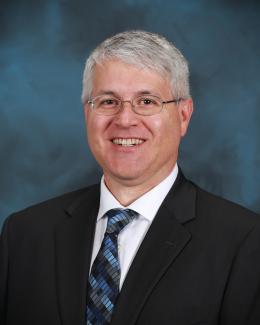David Denton, Lance Wyant (on manipulator) and Cassandra Fike-Hanley prepare irradiated thorium target segments for dissolution. That processing will separate out actinium-225, which will then be packaged for customers. Credit: Genevieve Martin/ORNL, U.S. Dept. of Energy

June 13 marked the dawn of a new division for the Isotope Science and Engineering Directorate.
To address the growing demand for radioisotopes, some of which are now available only from ORNL, their routine manufacturing is part of a new Isotope Processing and Manufacturing Division. Previously, radioisotope manufacturing was done in conjunction with research and development (R&D) in the Radioisotope Science and Technology Division.
With a division devoted to manufacturing — an idea that grew out of ISED staff suggestions — ISED can focus on standardizing manufacturing processes, making both the amount and quality of isotopes more predictable, said John Gearhart, chief operating officer for ISED.
“The challenges of doing isotope manufacturing in an R&D organization had been recognized for a long period of time,” Gearhart said. “Of course, the reason we have our isotope manufacturing capability is because of years and years of R&D, decades of work by incredibly talented people.”
ISED’s new challenge is to separate isotope manufacturing from R&D — and excel at both.
The decision dovetails with an increased demand for radioisotopes for medical, industrial and national security uses, as well as the United States’ renewed focus on reducing the need to rely on foreign suppliers — such as Russia — for isotopes.
“The demand for radioisotopes has grown enormously over the last decade,” said Susan Hogle, director of the Radioisotope Science and Technology Division. “Throughout this period, ORNL has developed the largest portfolio of radioisotope research, development and production for the Department of Energy’s Isotope Program.”
Now that ORNL is moving to put several of these radioisotopes into routine processing and distribution, Hogle said, the focus for those isotopes is moving from development into efficient, quality-controlled processing.
“The formation of the new Isotope Processing and Manufacturing Division will help achieve this goal by streamlining the execution of producing isotopes and bringing a manufacturing mindset to the appropriate operations,” Hogle said.
Hogle said ORNL’s manufacturing processes will continue to benefit from R&D, utilizing a new system for implementing changes.
The goal of the new division is more reliable isotope productions, with repeatable results. But R&D will still be used to explore ways to improve the manufacturing process, increasing efficiency and quality and reducing waste and cost. Once those methods of improvement have been verified in R&D, they’ll be transitioned into manufacturing, replacing or supplementing existing processes — with no disruption to manufacturing while the new process is being developed and tested.
The new division will draw from current employees in other ISED divisions, as well as bringing in employees new to ISED — including IPMD’s director, Jim Placke. Most recently at the neighboring Y-12 complex, Placke has experience leading both manufacturing and R&D activities.
“The ability to create a new manufacturing organization from scratch really appealed to me,” Placke said. “It’s a chance to use what I’ve learned from going into existing organizations to improve them. I like that our work will have a positive impact in medicine and other areas. It is critical that we meet the nation’s need by having a steady supply of crucial isotopes that are produced as efficiently as possible.”
Radiochemical lab technician Curt Porter, who is among staff who have moved to the new division, said he and other technicians have not seen their jobs change much; they’re supporting the same projects, he said, but are now grouped with other staff they worked closely with anyway, even when they were in separate divisions.
“It puts us with teams of similar work that we support occasionally,” said Porter, who joined ORNL 16 years ago. “It also joins us with the control room personnel we commonly work hand-in-hand with. I can see where being one group in a larger team that is now combined with resources that are specifically utilized for that group would be beneficial. We should have the same support staff to ensure every small part of the larger organism works together, and hopefully that includes personnel who can streamline the process. There may not be as many hurdles to overcome, being one division instead of crossing division lines.”
Radiochemical processing technician John Dyer said that under the new division, his group is focused on one part of production — target fabrication — rather than multiple projects as in the past. Other groups will now be responsible for those projects, he said.
“I can see the new setup putting a clearer definition on what we will be responsible for, and thus repeating it,” Dyer said.
Dyer said he’s been at REDC less than five years but already has seen numerous changes. He said the confidence of leadership in the new division and the associate lab director’s openness in having direct conversations with staff and listening to feedback give him optimism that this change will be a positive one.
Discussion of a separate manufacturing division dates back to the formation of an isotope-specific directorate itself, said Sutharshan. ISED was created in October 2020.
Sutharshan said ISED employees took the initiative to do the work needed to implement the new division, which is also supported by ORNL leadership, UT-Battelle and DOE’s Isotope Program.
“This is a tremendous step for our directorate, giving us the opportunity to focus on continuously improving our manufacturing capabilities while taking full advantage of the extraordinarily talented people, depth of knowledge and unique facilities we have here at ORNL,” Sutharshan said. “I deeply appreciate all the people who have invested time into making sure this new division is poised for success.”
UT-Battelle manages ORNL for the Department of Energy’s Office of Science, the single largest supporter of basic research in the physical sciences in the United States. The Office of Science is working to address some of the most pressing challenges of our time. For more information, please visit energy.gov/science.




